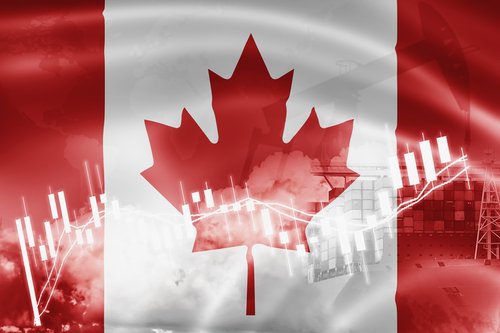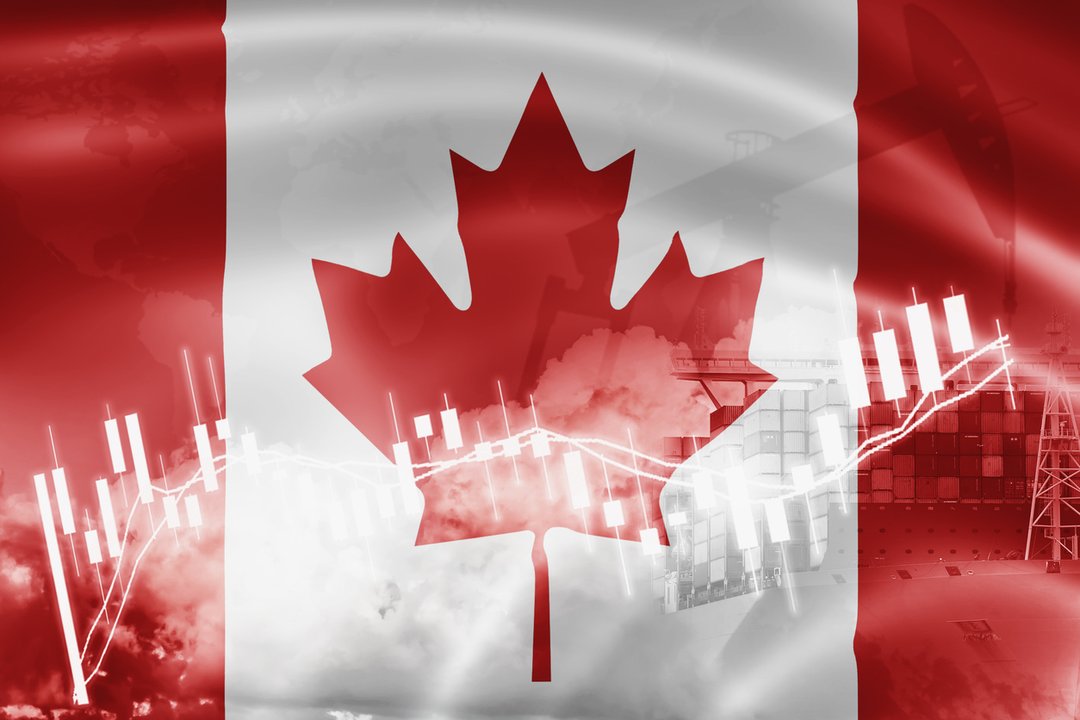
The World Bank released its Global Economic Prospects report this month, calling for a “sharp, long-lasting slowdown” and slashed its global growth forecast for this year to 1.7 per cent from its mid-2022 prediction of 3 per cent.
To gauge the potential weakness for the Canadian economy, I recently spoke with Benjamin Tal, deputy chief economist at CIBC World Markets, who shared his 2023 perspectives on inflation, interest rates, the labour market and economic growth.

iStock-1158944309.jpg
What are your expectations for the Bank of Canada’s next rate announcement on Jan. 25?
Our call is that the Bank of Canada will raise rates by 25 basis points to 4.5 per cent. [A basis point is one-hundredth of a percentage point.] Although there is a real risk that they will raise by 50 basis points, given the still very tight labour market as was reflected in the much stronger-than-expected job creation in December, 2022. So one more rate hike by 25 or 50 basis points, and then they will rest.
Now, let’s talk about overshooting. Inflation is a lagging indicator, which means that the risk of overshooting is real. You can raise interest rates way too much, the way it happened in the past. I believe that we are starting to enter this zone. If rates go to 5, 5.5 per cent for some reason, then we’re talking about the more significant recession where the labour market will be suffering and the unemployment rate will rise significantly.
In your economic models, what’s the probability of a more significant recession?
I would put about a 25- to 30-per-cent probability of this occurring.
The reasons why we calling for a mild recession or a soft landing is because there are two buffers that might protect us from a more significant recession. One is the amount of money held by individuals – excess savings that will allow the consumer to be stronger than expected. The other is the job vacancy rate, which is relatively strong. These two forces can protect the economy from a more significant decline, assuming interest rates will be peaking very soon.
Where do you see the unemployment rate headed?
By the end of 2023, about 5.9 per cent, and then going down to about 5.6 per cent by the end of 2024. (In December it was at 5 per cent.) We see both years to be relatively weak. 2024 will not be a recovery year because interest rates will be remain high for a long period of time. I think that’s important to communicate. We forecast 0.7-per-cent GDP growth in 2023 and 0.9 per cent in 2024 – not a big recovery.
The recovery will start at the end of 2024. By 2024, after two years of slowing down, you will be able to close the output gap and we’ll reach inflation of 2 per cent.
I know that this sounds a bit optimistic, but remember the move from 7 per cent inflation to 4 per cent will be relatively easy, mostly due to supply chain improvements and commodities. The challenge will be to move from 4 per cent to 2 per cent.
I think that there will enough slowing in the economy to bring inflation back to around 2 per cent by the end of 2024, and if we are wrong, it would be mid-2025, but it will not be dramatically after that.
When do you believe the Bank of Canada may begin to cut rates?
In the past, the distance between the last hike and the first cut was relatively short. This time, we believe it will be relatively long, namely a year. We don’t see the bank cutting rates until early 2024 to make sure that inflation is dead.
Do you expect the overnight rate will return to below 2 per cent where it was pre-COVID or do you see a shift to higher rates going forward?
I believe the Bank of Canada will cut to 3 per cent. Why three? Because there are four inflationary forces in the background. We have deglobalization – that is inflationary. We have just-in-case inventory because of COVID. We have a labour market that is definitely not cheap and available. The environment is inflationary because of the extra costs related to environmental regulations.
The inflation target of the Bank of Canada is 2 per cent. That target is not going to change. The only way to keep the target at 2 per cent is to have interest rates higher than they were before. That’s why we believe that the Bank of Canada will cut to 3 per cent and stop.
Given your expectations of low economic growth, rising unemployment, and elevated interest rates, what is your outlook for the housing market?
During COVID, homebuyers got the benefit of a recession, that is, extremely low interest rates, without the cost of the recession and a broadly-based increase in the unemployment rate. There was a sense of urgency to get into the market and we front-loaded activity. What we’re seeing now is not a crash, it is a reallocation of activity over time.
What’s next? Well, I see this weakness continuing. Come the spring, when the market is more balanced, people will start listing their houses. In addition, I believe that we are going to see some forced sales, basically distressed sales. We know that many people will have to renew their mortgages over the next year or two. We all know that the damage is going to be significant. It’s a significant change from mortgage rates of 1.5 per cent to 5.5 per cent and the Bank of Canada is still raising interest rates. Some people will not be able to renew their mortgages so they will have to sell. Now, it will not be a significant number. but it will add to supply.
And then you have another factor, investors will be adding to the supply because the cost of owning a house has risen much faster than rent. Therefore, I think that this slowdown in the housing market will continue for the next year.
I see it as a positive story as the housing market needed a reset. Remember, prices went up by 46 per cent in two years.
The fundamentals of the housing market are still very strong. We are talking about a target of 500,000 new immigrants a year so demand is going to be strong. And what’s happening more and more due to higher interest rates, due to the cost of construction, due to the shortage of supply of labour and trades, we see more and more projects being cancelled. So more people are coming, less is being built.
Longer-term, what are the implications for housing affordability?
The short answer is that beyond the correction that we are witnessing now, the housing market will remain unaffordable and will become even worse from a long-term perspective.
I’m encouraged by the fact that for the first time we see governments, at all levels, dealing with supply as opposed to demand. That’s extremely positive. The provincial government in Ontario, for example, and the federal government are talking about a significant increase in home construction. And I say, it’s easy to say, it’s very difficult to do it because the industry does not have the capacity to build so many houses. For example, shortage of labour and trades is one of the most significant factors limiting supply. So we need to increase this capacity.
As the earnings season kicks off, what are your thoughts on earnings? More specifically, do you believe companies won’t be able to pass rising costs on to the consumer, resulting in margin compression?
The short answer is yes.
We talk to many CEOs when we discuss the economy and more and more of them say it’s more difficult to pass through costs to the consumer. The consumer is starting to resist, the consumer’s changing its behaviour. While the supply chain is improving, the ability to pass through costs is getting more and more difficult.
If you look at earnings expectations, they are still relatively elevated compared to where we are in the economic cycle. So I think that we are now in the process of adjusting expectations downward and that’s why the market is still unable to take off.
I think when we have fully priced in higher interest rates and there are more realistic earnings expectations reflecting the inability to pass through costs, that’s when the stock market will be able to improve in a more sustainable way. We’re not there yet.
When could we be there?
It’s very difficult to say but I think that the second half of the year can be much better than the first half of the year, reflecting the fact that the stock market and the adjustment in earnings will be completed.
2022 was a challenging year for both fixed income and equity investors. Do you see the greater opportunity in stocks or bonds?
That’s a tough one. But I think that the bond market can surprise on the upside beyond the next few months.
At some point, when the market is more relaxed on inflation, when we see a slowdown in the economy, and the impact of higher interest rates is really being felt in the economy, because remember we haven’t felt the full impact of higher interest rates, it takes a while, all those forces will support valuations in the bond market. So I think that the bond market can be a very interesting place to be in 2023.
What areas of the stock market tend to perform well under the current economic conditions?
I think that we have to be defensive here. Usually dividend stocks do relatively well in this kind of environment. Overall, our strategy analysis group recommends energy, utilities, and communication services.
In recent months, the Canadian dollar has been weak relative to the U.S. dollar. Do you see this weakness continuing?
There is no reason to believe that the U.S. dollar will lose significant momentum over the next few months as we believe the Fed will remain hawkish, there’s uncertainty regarding a recession, China is slowing down, and Europe is in a semi-recession.
In mid-2023, when the market sees the Fed ending its tightening policy and start talking about the possibility of cutting rates, and the fear of a recession is basically over, the American dollar can start losing some ground against major currencies.
So we see the Canadian dollar remaining relatively weak, staying where it is right now over the next few months, and start to gain some ground, a few cents, after mid-2023.
We have the upcoming the World Economic Forum annual meeting in Davos. What key themes do you think will emerge?
I think the risk of elevated inflation and the necessary cost to bring it down is one thing. The other is deglobalization and the implications for global economic growth and potential growth. And third, I think is going to be the environment and how we can marry strong economic growth with the challenges facing the environment.
In December, 2021, I asked you what phrase you believed would characterize 2022 and you said, “the transition of pandemic to endemic.” What phrase do you believe will characterize 2023?
I would say end of inflation panic.
Comments are closed.
